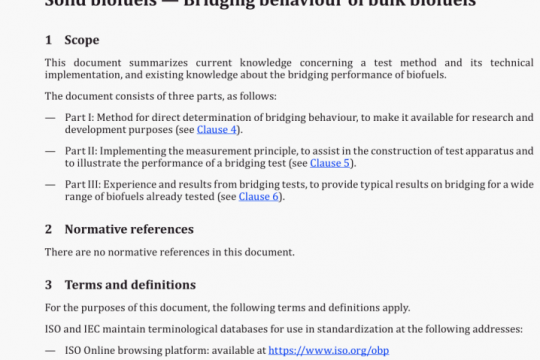ISO/TS 30433 pdf free download
ISO/TS 30433-2021 pdf free download.ISO/TS 30433 pdf free download- Succession planning metrics cluster.
A result of 100 % indicates that there are as many potential successors as there are leadership positions in need of potential successors.
In example 2 the organization has defined the total number of leaders. This leadership group includes employees with the designation senior manager, director or executive in their title and totals 44 people. The average number of employees in the succession pool is 132.
EXAMPLE 2 132 (potential leaders)/44 (identified leadership positions) x 100 300 %.
Example 1 indicates a successor coverage of 54 % of the leadership positions while example 2 indicates
a coverage of 300% of the leadership positions.
5.4 How to use
Organizations can find it useful to analyse successor coverage across various leadership designations, such as senior manager, director, president and vice president and other executives, functions, job families, organizational units and geography, to understand how well critical positions are covered by potential successors and to anticipate or overcome succession pool gaps.
Leadership (and managerial positions as an extension of this) involving key thinking, skills and knowledge components that are critical to the business or hard to replace, or are key positions of authority, scope or market accountability, can therefore be determined as critical positions for which the organization should develop a successor pool.
A key component of succession management is the correct identification of potential leadership successors. A small successor pool likely indicates problems in the succession planning process, such as the talent pipeline being potentially too restrictive, the current workforce lacking the right thinking or having insufficient skills, knowledge and experience to fill critical leadership positions.
Organizations in this situation need to look externally to fill many of their leadership positions, which can drive excessive costs and result in a lack of corporate history in key positions or a significant shift or exaggerated variations in organizational culture.
Once the succession pool is identified, employees in the pool can be continually developed to successfully assume the next generation of leadership within the organization.
Relative goals against a benchmark group are not likely to be useful for this measure because of the differences in leadership populations and succession management practices across organizations.
Coverage rate goals for this measure are based on the organization’s estimation of how many ready successors are necessary for each position, the readiness level of those employees identified as potential successors and the anticipated turnover of both the employees in the successor pool and the leaders to be succeeded.
As the organization moves through the familiar organizational life cycle, from start-up through the growth phase, maturity, reinvention or decline, the succession planning focus can shift in terms of numbers and skill sets. For example, in the start-up phase, having a large talent pool is sometimes not possible and therefore the risks to the organization (both operationally and strategically) of leader exits can be higher than in the maturity phase, when the organization will be more established. Where positions have been recently filled, it is not always feasible to create or maintain a large talent pool.
Equally, the organization should dedicate resources (including budget) for development activities such as time for study, time off for training, coaching, job shadowing and developmental assignments on top of their business-as-usual duties, so that all potential successors have an equal opportunity to grow and have access to a diverse array of development opportunities.
In succession planning we should consider that not all positions necessitate a successor pool. For example, low-level manager positions or managers with common skill sets do not necessarily require succession consideration. Some organizations will have limited resources to support or fund development opportunities, therefore internal support tools that offer development, such as special project work or solving other departments problems, can be utilized.
5.5 Contextual factors
When considering the context supporting the metric results, consider:
— FTE count at each measurement point, i.e. has the FTE grown or shrunk enough to change the perspective and meaning of the metric results?
— current activities the organization is undertaking:
— increased production or product expansion;
— reorganizations;
— current activities in educating the workforce;
— cultural shifts, both positive and negative;
— generational perspectives;
— social change or awareness leading to increases in reporting;
— industry expectation;
— economic factors:
— downturns;
— upturns.
5.6 Predictive factors
The usefulness of successor coverage rate as a measure of the effectiveness of succession planning processes depends on the appropriate identification of successors.
Having a broad succession pool does not necessarily guarantee that successors will be ready to assume key positions when needed, thus it is a measure of breadth, not depth.
When forecasting potential improvements or deterioration in the current situation, organizations can look to the future known and anticipated events and consider:
— planned organization structural or workforce changes;
— upcoming work, function or product changes;ISO/TS 30433 pdf download.




